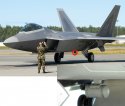The lift is created by a vortex around the wing. Imagine a two dimensional airfoil in an air steam under an angle of attack. The speed of air on the suction side is larger than on the pressure side. If you subtract the free airflow you see a vortex around the airfoil, with something strange near the trailing edge.Maybe the wrong place to discuss this specific detail, or perhaps I'm plainly wrong altogether. But in my (old fashioned?) understanding the higher pressure air from under the wing streaming around the tip to the top is exactly not what is creating lift, rather the exact opposite.
You do want to keep that pressure difference to experience lift. Hence all the effort with winglets and what not, on subsonic aircraft.
That vortex, by trying to balance that pressure difference is reducing lift and inducing additional drag.
Also, while the airstream tries to balance that pressure diffetential along all paths - and I'm not really firm as regards airfoil properties in relation to vortex creation - I was so far always under the impression that vortecies are created by airflow around the tip, and not primarily the trailing edge.
At some higher angle of attack the flow will detach and the airfoil will stall. By creating vortices that run from some vortex generator, in the case of J-20 the canard surfaces, in the case of C-17 little half delta wings on the engine cowlings, in the case of humpback whales lumps on the leading edges of the breast fins, the stall is delayed to a higher angle of attack and the lift is increased at the price of some increase in drag. All engineering and all life is a matter of compromises.




